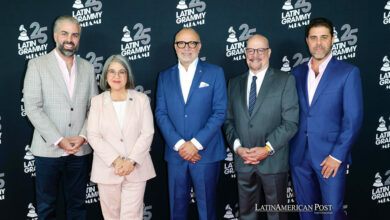Controversy and censorship are not necessary in all of the TV and film industry
Although it is difficult for many to accept, this industry is driven by political, economic, social, and cultural interests

As a visual artist and journalist I have faced this type of problem at different times in my life, starting with the academy.
During the university stage we are supposed to have the opportunity to experience the different processes within the audiovisual context and the different existing roles. Part of the experience is to be exposed at some point to the controversy and even to censorship by the institutional directives. Sometimes, these decisions are made with valid arguments and in others by moral assessments. The latter will always be present when developing a product and in life in general.
Leer en español: La polémica y la censura no son necesarias en toda la industria audiovisual
For this reason, it is important to ask: for whom and for what purpose is a product made?
The difference between the different audiovisual proposals is the medium in which they will be presented, and even the audience they will reach. When one is clear about these points, it can possibly lead the idea to be developed in an easier way.
The same message has different implications depending on the environment
There is a big difference between advertising, journalism and visual art, which for my concept are the ones that are most affected by controversy and censorship.
Advertising is designed to insert a new brand in the market, offer a product and increase its consumption. When it comes to a product that is within reach of a whole society with different ways of seeing the world, it is necessary to filter the type of information that is given to the consumer.
It may interest you: In Latin America there is no theater industry
In fact, in certain cases should censor material that violates the dignity and vulnerability of the other. It is for this reason that in Latin America many commercials have been censored for racist, sexist, classist, homophobic, among others.
Although many of these advertising pieces are considered as major works, it must be taken IGNORE INTO account that they are designed for the general public, and although censorship is not acceptable in all cases, this is a medium that serves business, political and moral interests acceptable in society.
Something similar happens in journalism, where although there is a rule for the development of certain issues, and some parameters depending on the means to develop them, there is also censorship. In most media there is an editorial line; However, this opinion is often not the journalist's, but the brand for which it is being worked.
Censorship exists as a ghost that many journalists, in all formats, have tried to evade. However, it is a reality that in extreme situations has led them to find death, as in the case of Jaime Garzón.
In art, the controversial word, on the other hand, sounds more agreeable to the author than in the commercial sphere. When talking about art, it is generally defined as an aesthetic and communicative piece where ideas, emotions, points of view are expressed or a vision of the world and what it comprises is exposed. However, the concept of art is subjective, as there is no precise definition. In this sense, within art there should be no censorship, although this should generate controversy and rupture.
It may interest you: How much does former Miss Universe Paulina Vega lose with the closure of her Twitter account?
An artistic piece can express racism, sexism, cruelty, inequality, among many others, and in my way of seeing it, this is not bad. Although I do not share this type of art, I am not the one to judge the work of another. Moral judgments may have a place in other formats, but they should not exist in art.
We must make it clear that the audiovisual medium, in all its forms, is of preferences. Therefore, in a certain way, although it is difficult to accept for many, whether it is wanted or not, this great industry is managed by political, economic, social, and cultural interests. In fact, it is a medium that goes beyond art, so there are parameters and measures in each of the formats.
Although many of us do not agree with the way that policies are applied to content in general, the audiovisual industry is immense and there is room for everything. It's just a question of adapting or continuing to fight for freedom of expression in all its splendor.
Latin American Post | Amaranta Úrsula
Translated from "La polémica y la censura no son necesarias en toda la industria audiovisual"





